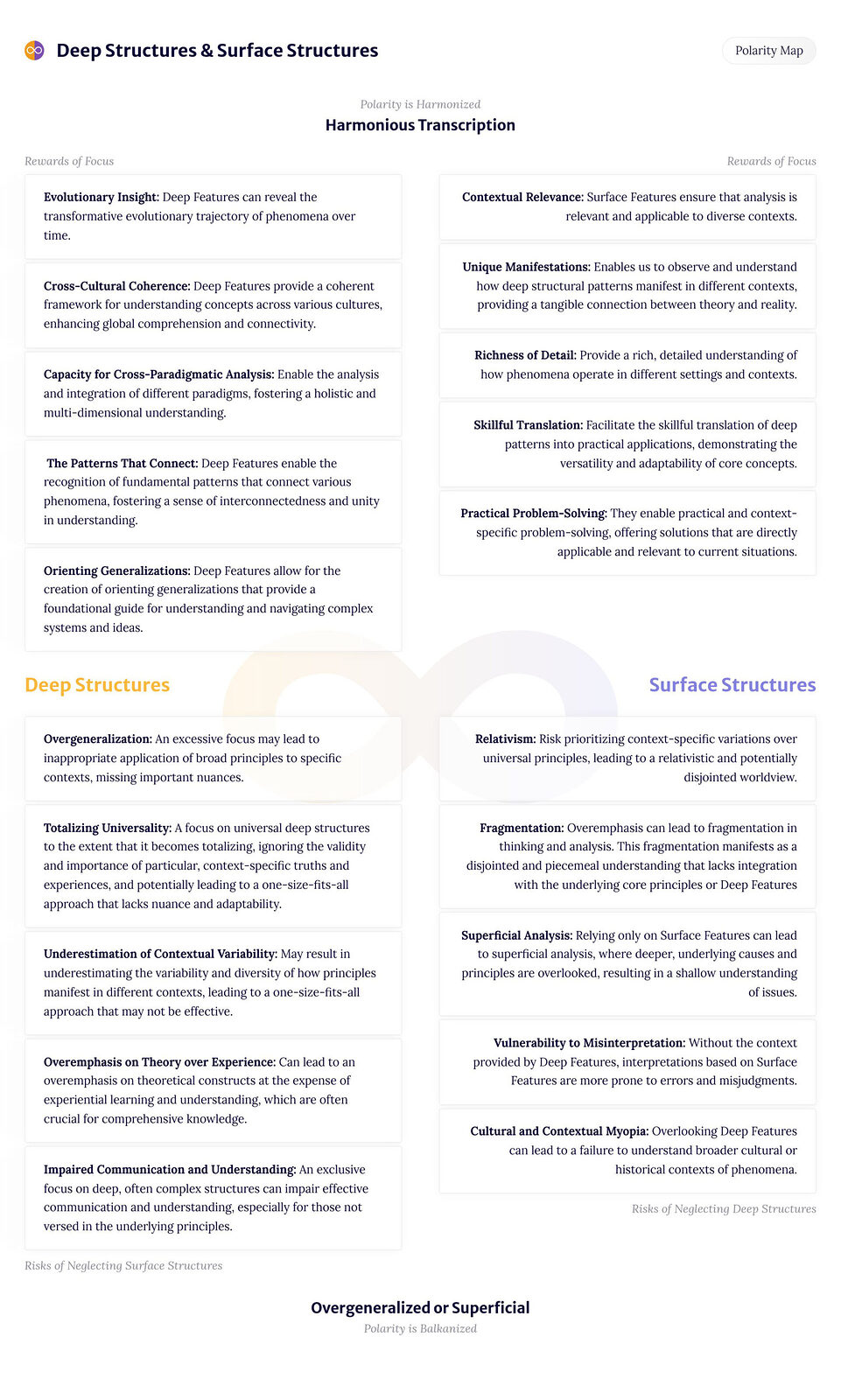The polarity between Deep Structures and Surface Structures represents a fundamental dynamic in integral thinking, crucial for a nuanced understanding of reality. This polarity underscores the interplay between the underlying, often implicit structures that govern systems (Deep Structures, sometimes called “deep features”) and their explicit, observable manifestations (Surface Structures, sometimes called “surface features”). Grasping this polarity allows us to see beyond surface phenomena to the underlying patterns that inform them, enhancing our ability to make sense of complex realities and adapt our thinking to accommodate both enduring principles and emergent trends.
Deep Structures are the intrinsic, often hidden structures, principles, or patterns that underpin and give rise to observable phenomena. They provide a stable, enduring foundation for our understanding of complex systems, whether in individual cognition, social dynamics, or natural processes. Deep Structures are crucial for theoretical clarity, offering a consistent framework that aids in analyzing and predicting outcomes based on foundational principles. They enable us to see beyond immediate appearances to the underlying architecture of reality, thus shaping our worldview and guiding our long-term strategic thinking.
Surface Structures are the observable, external manifestations of deep structures. They represent the dynamic, adaptable expressions of underlying principles, visible in everyday occurrences, behaviors, and societal trends. Surface Structures offer contextual relevance, ensuring that our understanding and applications of theories are adaptable and responsive to the immediate environment. They bring richness and diversity to our perception, allowing us to navigate and respond to the ever-changing landscape of reality. Understanding Surface Structures is key to practical application, innovation, and responsiveness in real-world scenarios.
“And so we can say: translation is a change in surface structures (‘horizontal’), whereas transformation is a change in deep structures (‘vertical’).”
Ken Wilber, Sex, Ecology, Spirituality
Example: Stages of Development
-
Deep Structure: The stages of development themselves (e.g., Magenta, Red, Amber, Umber, Orange, Green, Teal, Turquoise), each stage encompassing specific psychological and cognitive qualities that are universal to all human beings, in whatever culture we find them in.
-
Surface Structure: The diverse ways these stages manifest in culture, society, and individual experiences. For instance, two individuals at the same developmental stage might express the qualities of that stage very differently based on their personal experiences, cultural background, and social context. Similarly, a society or culture might reflect a particular stage in various ways through its laws, norms, art, and organizational structures.
This example underscores that while there may be a finite number of developmental stages (Deep Structures), the expressions of these stages (Surface Structures) are incredibly diverse and multifaceted. This diversity is not just across individuals but also within the same individual across different contexts and times. Understanding this dynamic allows for a more flexible and inclusive approach to personal growth, social analysis, and cultural understanding.
See the full polarity here, including:
- Integrated Polarity
- Unintegrated Polarity
- Tips to Harmonize This Polarity
- Tips to Integrate This Polarity
